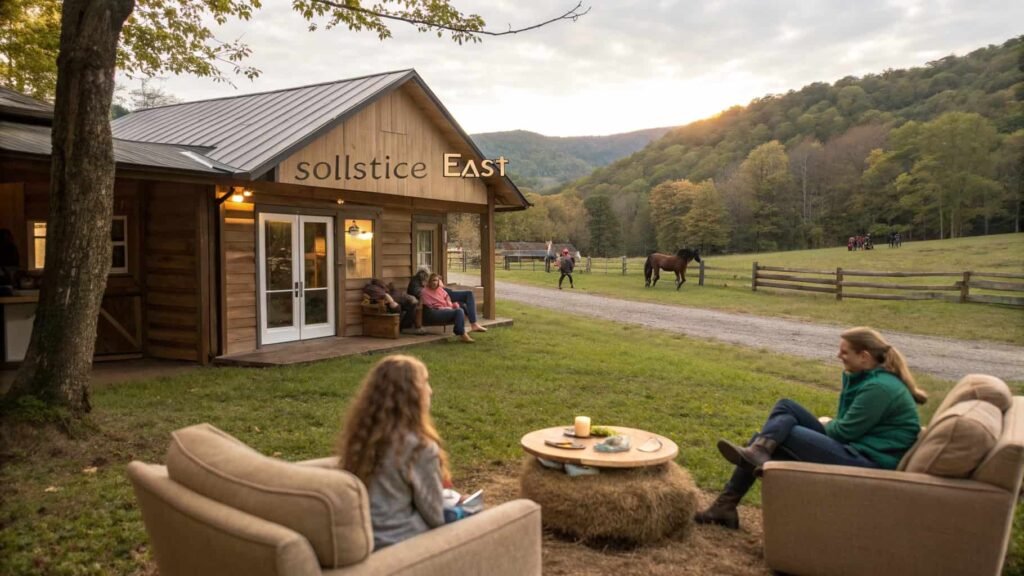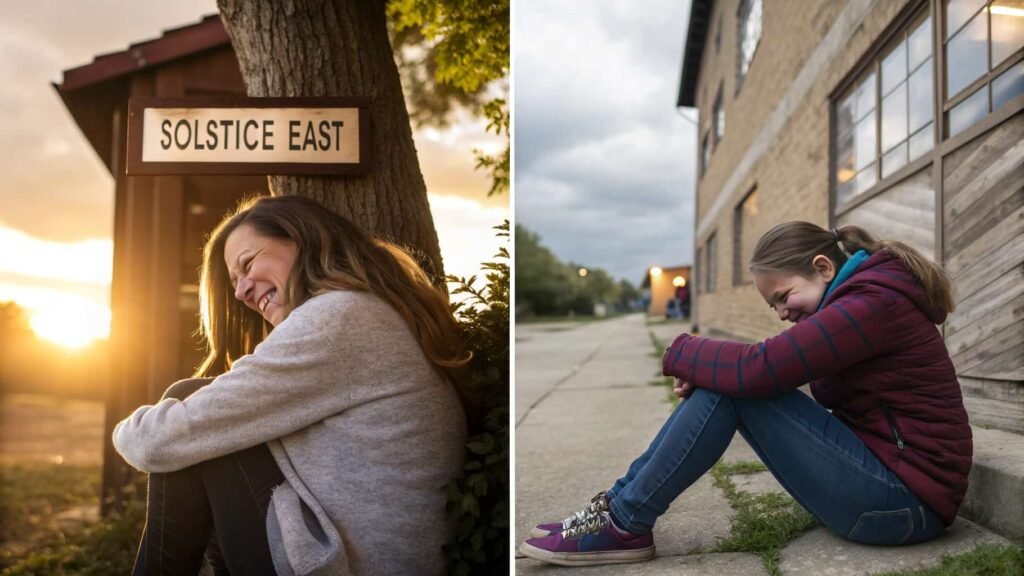Inside Solstice East: Programs, Challenges, and Impact!
Introduction
Solstice East is a prominent residential treatment centre located in Weaverville, North Carolina, designed specifically for adolescent girls aged 14 to 17. Nestled in the scenic Blue Ridge Mountains, this centre promises a holistic approach to healing, combining clinical therapies with academic support and experiential learning.
The facility has built its reputation around helping teenage girls manage mental health conditions such as depression, trauma, anxiety, and behavioural issues. However, alongside its acclaim, Solstice East has also faced scrutiny, including lawsuits and regulatory investigations that have sparked national attention.
This article provides a comprehensive examination of Solstice East, including its mission, programs, controversies, and the broader implications for residential treatment in the U.S. mental healthcare system.
Understanding Solstice East
Solstice East was founded with a mission to empower adolescent girls through healing relationships, individual growth, and integrated therapies. The centre aims to create an emotionally safe space where students can reclaim their autonomy and confidence.
The treatment centre is situated on a 25-acre campus, offering a peaceful and therapeutic setting. Facilities include residential cottages, equine barns, classrooms, and recreational spaces designed to support mental, emotional, and academic development.
Solstice East targets teens who struggle with trauma, attachment issues, self-harm, disordered eating, and other emotional or behavioural conditions. The goal is to deliver structured treatment while maintaining a nurturing and supportive community.
Therapeutic Approaches and Programs

Clinical Therapies
Solstice East provides a blend of evidence-based clinical therapies tailored to each student’s individual needs. Core treatments include:
- Cognitive Behavioural Therapy (CBT): Helps students understand and restructure negative thought patterns.
- Dialectical Behaviour Therapy (DBT): Teaches emotional regulation, distress tolerance, and interpersonal effectiveness.
- Eye Movement Desensitisation and Reprocessing (EMDR): Often used to process trauma.
- Somatic Experiencing: Focuses on body awareness to relieve symptoms of stress and trauma.
- Brainspotting: Accesses more profound emotional experiences to resolve psychological issues.
Students participate in both individual and group therapy sessions, with clinical staff monitoring their progress and adjusting treatment plans as needed.
Equine-Assisted Therapy
Equine therapy is a cornerstone of the Solstice East experience. Interacting with horses allows students to develop empathy, responsibility, and self-esteem.
Activities include grooming, feeding, and riding, offering both therapeutic and physical benefits. Many families report significant emotional breakthroughs tied directly to this hands-on experience.
Adventure Therapy
Outdoor activities are integrated with therapeutic objectives to promote resilience and self-efficacy. Students participate in:
- Hiking through mountain trails
- Mountain biking challenges
- Canoeing and water-based exercises
- Overnight camping trips
These adventures are designed to build trust, teamwork, and leadership skills while helping students engage with the natural world in meaningful ways.
Academic Programs
Solstice East offers a fully accredited academic curriculum, helping students stay on track academically while undergoing treatment. The school operates year-round with flexible enrollment and scheduling to accommodate therapeutic needs.
The academic team collaborates with therapists to ensure that emotional healing supports educational growth. Subjects include math, science, English, and social studies, aligned with state standards and personalised to each student’s academic level.
Support is provided for credit recovery and college preparation. Success is measured through improvements in GPA, standardised test scores, and college acceptance rates.
| Feature | Description |
| Accreditation | Fully accredited by AdvancED (now Cognia) |
| Academic Calendar | Year-round with customised terms |
| College Prep | SAT/ACT support, application guidance |
| Support Services | Individualised Education Plans (IEPs), credit recovery |
Family Involvement and Support
Solstice East believes that family involvement is crucial for achieving and maintaining sustainable recovery. Weekly family therapy sessions are offered via video conferencing, enabling ongoing participation even from a distance.
In addition, families are encouraged to attend on-campus workshops that help educate and empower them with coping skills, boundary setting, and communication strategies.
Open lines of communication between the centre and families are maintained through regular updates, progress reports, and scheduled calls.
Controversies and Legal Challenges

Overview of the Lawsuit
In recent years, Solstice East has faced serious allegations, including claims of negligence, emotional distress, and failure to provide adequate care. A lawsuit filed by the parents of a former student alleged that the centre’s practices led to lasting psychological harm.
The legal proceedings outlined multiple incidents involving improper restraint and neglectful supervision. These claims have prompted widespread discussion among mental health advocates and families considering residential treatment options.
Regulatory Findings and Penalties
An investigation by North Carolina officials revealed several concerning practices, including:
- Medication errors involving incorrect dosages
- Inappropriate use of restraints and seclusion
- Failure to meet mandated staff-to-student ratios
As a result, Solstice East was fined and required to implement immediate corrective measures.
Response from Solstice East
In response to these allegations, Solstice East has denied any systemic wrongdoing. The centre stated that staff acted within professional guidelines and emphasised its ongoing commitment to student safety.
They also reported implementing new protocols and enhanced staff training programs to address public and regulatory concerns.
Impact on Stakeholders
These controversies have deeply affected various stakeholders:
- Students: Some former students have reported lasting trauma, while others credit Solstice East with life-changing support.
- Families: Reactions range from gratitude for transformation to disillusionment with the system.
- Staff: Increased scrutiny has impacted morale, with several professionals reportedly leaving due to reputational challenges.
Industry-Wide Implications
The Solstice East case has reignited calls for broader regulation and transparency across the residential treatment industry. Lawmakers and mental health organisations are urging stricter oversight, particularly regarding the use of restraints and accountability measures.
Additionally, insurance companies are re-evaluating their policies related to residential mental health treatment, potentially affecting coverage and access for many families nationwide.
Reviews and Public Perception
Public reviews of Solstice East are mixed:

- Employee reviews note the emotionally demanding nature of the work, praising the mission but critiquing management.
- Student and parent testimonials are divided—some highlight genuine recovery, while others express regret or frustration.
- Media coverage has amplified these controversies, affecting the centre’s reputation and trust among prospective clients.
Conclusion
Solstice East is a residential treatment centre with a complex reputation. It offers a range of therapeutic and academic programs tailored to adolescent girls, aiming for emotional healing and academic success. While many families have experienced positive outcomes, the centre’s recent legal challenges and regulatory issues raise valid concerns.
For parents exploring treatment options, it’s essential to do extensive research, consult independent reviews, and understand the potential risks and rewards. Solstice East serves as both a beacon of healing and a cautionary tale in the evolving landscape of adolescent mental healthcare.
FAQ’s
1. How long is the average stay at Solstice East?
Students typically stay between 9 and 15 months, depending on their therapeutic needs and progress.
2. Does Solstice East accept insurance?
Solstice East is a private-pay facility, but families may receive partial reimbursement through out-of-network insurance benefits.
3. What is the student-to-staff ratio at Solstice East?
While the ratio may vary, the centre maintains a relatively low student-to-staff ratio to ensure personalised care.
4. Are students allowed to contact their families during treatment?
Yes, regular family communication is encouraged through scheduled phone calls, video sessions, and visits.
5. What qualifications do therapists at Solstice East hold?
Therapists typically have master’s or doctoral degrees in psychology, counselling, or social work, and are licensed in the state of North Carolina.














Post Comment